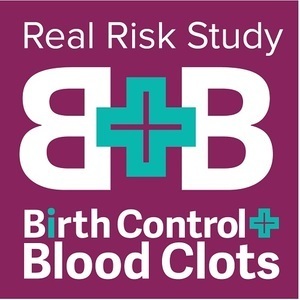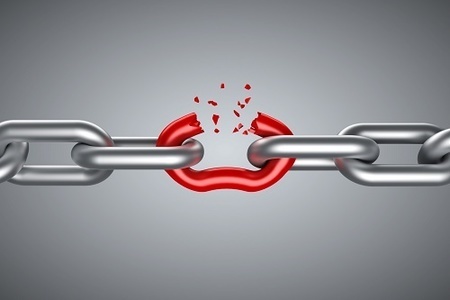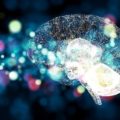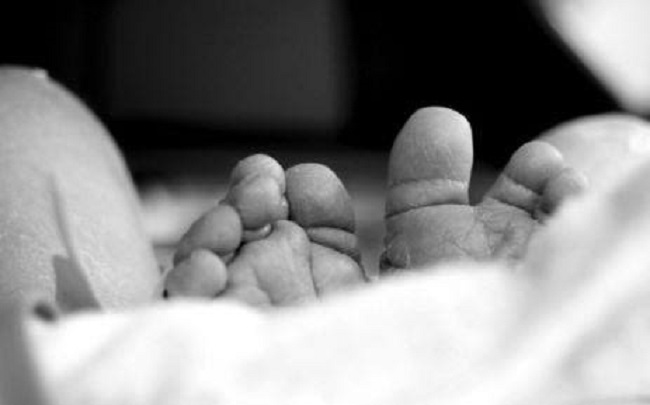Once upon a time, a 26-year-old woman went to her doctor and asked to be put on the new birth control pill that allowed women to only have four periods a year. She had seen it advertised on television. Four months later, 15 pounds heavier and suffering from mild depression, she returned to the doctor feeling miserable. The doctor told her the weight gain and depression were not from the pill because those were not side effects of hormonal birth control. Wait, does this sound familiar? It’s the same story I told in my article about hormonal birth control and weight gain. Only this time, I’m talking about mental health.
The truth is that I gave my mood changes and my mild depression very little thought. Once the doctor told me they were not a symptom of my new birth control pills, I figured it was my fault I was sad and not dealing with things very well.
What They Knew in 1970
I remembered the connection between my birth control pills and that bout of depression when I began reading the Nelson Pill Hearings. One of the first doctors to testify pointed out that there had been a suicide during the original pill trials in Puerto Rico. Neither the suicide, nor the other three sudden deaths (of five total deaths during the experiments) were investigated. But what really got my attention was that the page after the mention of the suicide was the only one missing in the nearly 1500 pages of testimony. I have since been able to get a copy of that page and while the testimony doesn’t seem that damning given the laundry lists of risks, concerns, and dangers with hormonal contraceptives that are examined at the hearings, it does bring up an interesting point.
Doctor Edmond Kassouf’s testimony answers questions from Mr. James Duffy, minority counsel at the hearings (page 6112):
Mr. Duffy: One of the five deaths was suicide.
Dr. Kassouf: Yes.
Mr. Duffy: So what I would like to understand is how does one take a suicide and link the case of death to the pill?
Dr. Kassouf: Very simply. It has been of current concern. Many physicians and psychiatrists are concerned about depression and the pill. If this is true, suicide may well be the end result of that combination and, therefore, a reasonable suspect, a reasonable link.
Suicide Attempts While on the Pill
“I’ve really got to look into this more,” I thought. Well, I had to look no further than page 6447 and the testimony of Dr. Francis Kane, Jr., Associate Professor of Psychiatry at the University of North Carolina. To sum up his testimony about the studies conducted with regard to mental health and oral contraceptives, he says this (page 6457):
“There is considerable incidence of mild to moderate psychiatric morbidity [disease] associated with the use of combination oral contraceptive agents… In three of the four studies, there seems to be agreement that those who have required psychiatric care in the past will be more at risk for the development of morbidity, including psychosis. One study also suggests that there may be some increase in the depth of illness the longer the medication is taken.”
Dr. Kane describes a study conducted in England of 50 women on oral contraceptives who were compared to a control group of 50 women who had not used hormonal contraception. There were no differences in socioeconomic status, age, or history of past depressive episodes. But in the group taking the pill, 14 women “had depression of mild to moderate proportions, while only three of the control group reported this.” The pill users also reported greater depression as well as particularly high scores for “guilt, self-absorption, and loss of energy.”
He goes on to say, “Two suicidal attempts in the pill sample were found, which had not been disclosed to the general practitioner. Since completing the study, another depressed pill-taker had made a serious suicidal attempt.” Three suicide attempts in a study of 50 women? That seems incredibly high to me. Ludicrously high. Especially given that there are other methods of contraception.
But Wait, There’s More!
But that’s just one doctor testifying about a few studies, right? Sure. But the next person to testify was Dr. John McCain (not the senator). One of the first things the doctor points out is (page 6471):
“The contraceptive pills are potent steroid hormones. Alterations of the anterior pituitary function are produced by them… the potential endocrine and systemic disturbances are almost unlimited. The effects produced through the anterior pituitary may be so indirect that years may elapse before a correlation is established between the abnormality and the administration of the contraceptive pills.”
You know what else is a hormonal medicine? Anabolic steroids. “Roid rage” is pretty well documented. Is it really such a leap to think that hormones in birth control can also cause changes in mental health?
Dr. McCain spent years documenting the patients in his practice who suffered serious side effects from hormonal contraception. In that time, he recorded episodes from 52 patients. And per his own testimony, his largest concern was mental health (page 6473).
“The emotional or psychiatric problems are the complications which seem to me to have the most serious potential danger. Three patients have stated that they were desperately afraid that they were going to kill themselves… After the pills were omitted, the depression and suicidal fears of the three patients disappeared, as did the depression of the other patients.”
He also points out (page 6473):
“It is disturbing to consider the patients on the pills whose depression may have ended in suicide and/or homicide with no recognition of any association with the contraceptive pills… Personality changes could be a factor in other conditions such as automobile accidents and divorces.”
Is it really so much of stretch to think that a potent steroid could cause personality changes that could lead to the damaging of personal relationships that are beyond repair? Plenty of other potent substances can and do.
What They Say Now
Dr. Kane and Dr. McCain, as well as every other expert who testified at the Nelson Pill Hearings, agreed on one thing. More research was needed.
So what does the research say now?
Medscape published an article from the American Journal of Epidemiology with the claim that “Hormonal contraception may reduce levels of depressive symptoms among young women.” Yet when you read further into their conclusions, they say that nearly one-third of women discontinue hormonal contraceptives within the first year, many because of mood changes, and those women are unlikely to restart hormones. Therefore, “hormonal contraceptive users at any time point may be overselected for less depression than nonusers.”
The study also points out that:
“Existing literature on hormonal contraception and depression has been primarily confined to small, unrepresentative samples. Among these smaller studies, few cohesive findings have emerged.”
And:
“Little research has examined the role of exogenous hormone use in suicidality, and existing research has focused on mortality from suicide rather than suicide attempts.”
And according to WebMD, there are a laundry list of medications that can cause depression. What is not included on this list? Birth control pills. The only hormonal contraception included is Norplant. Interestingly enough, the active ingredient in Norplant is levonorgestrel, a progestin found in many birth control pills as well as hormonal IUDs. So am I supposed to believe that when injected into my arm, synthetic hormones can cause me depression but when taken daily as a pill or sitting in my uterus for 5 years, they won’t? Does that make any sense at all?
It doesn’t make sense to Dr. Kelly Brogan. That’s why when she has patients that complain of depression, anxiety, low libido, mood changes, weight gain, etc. she recommends they stop using hormonal contraception.
What Have We Learned?
- Hormonal contraceptives can cause mental health issues
- Women who suffer from mental health issues are much more likely to suffer from increased symptoms when on hormonal contraception
- Often the longer hormonal contraception is used, the greater the symptoms
- Discontinuation of hormonal contraception can usually alleviate mental health symptoms
- The research promised from the Nelson Pill Hearings has never materialized
Why, if they knew in 1970 that hormonal contraception was deeply connected not only to depression but also to suicide, has it not been further researched? It’s been nearly 50 years since Dr. Philip Ball (page 6493), a specialist in internal medicine, testified before congress. Which makes what he says all the more chilling.
“It is not considered reasonable that there be any mortality or morbidity in a pill used purely for contraception purposes. Medical research has got to offer something better than this. Physicians will probably look back on the contraceptive pill era of the past 5 years with some embarrassment.”
Exactly.
We Need Your Help
Hormones Matter needs funding now. Our research funding was cut recently and because of our commitment to independent health research and journalism unbiased by commercial interests we allow minimal advertising on the site. That means all funding must come from you, our readers. Don’t let Hormones Matter die.
Yes, I’d like to support Hormones Matter.
This post was published originally on Hormones Matter on June 22, 2016.





























